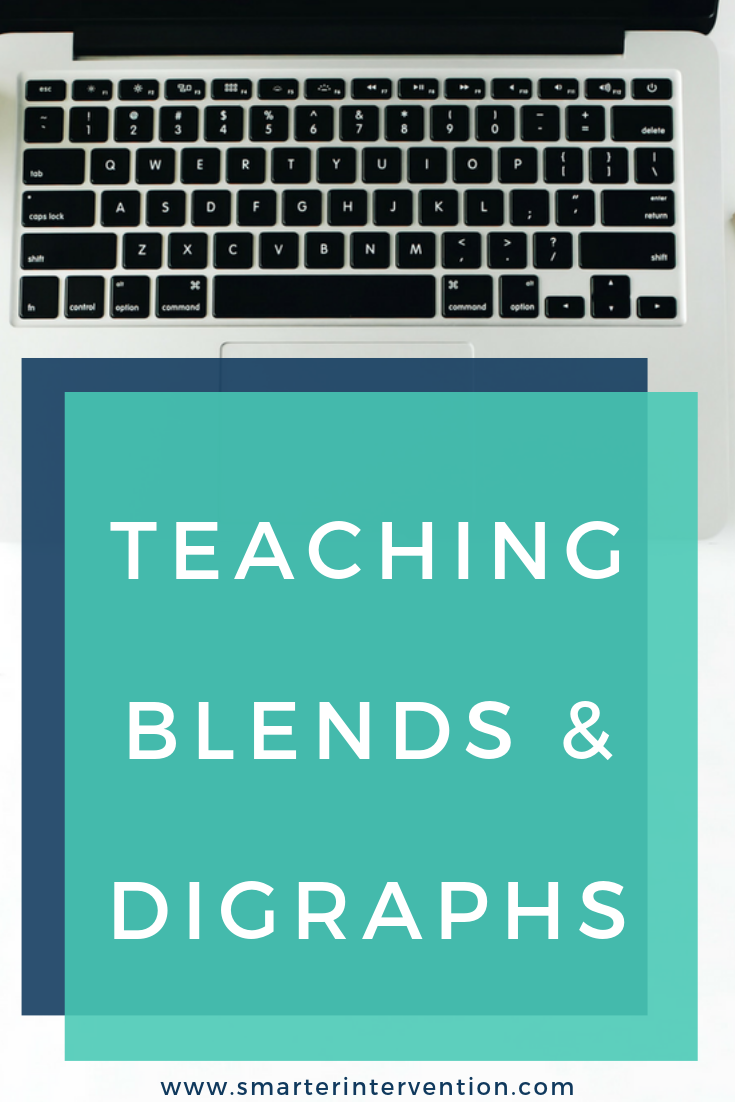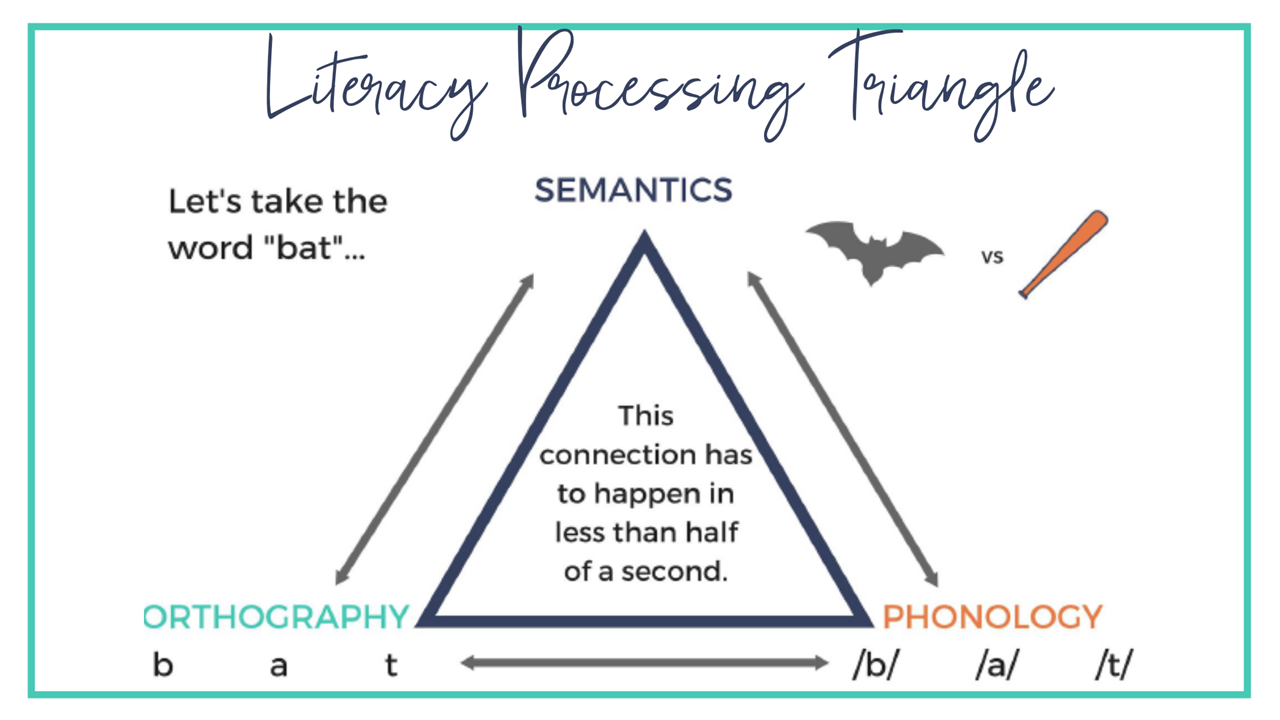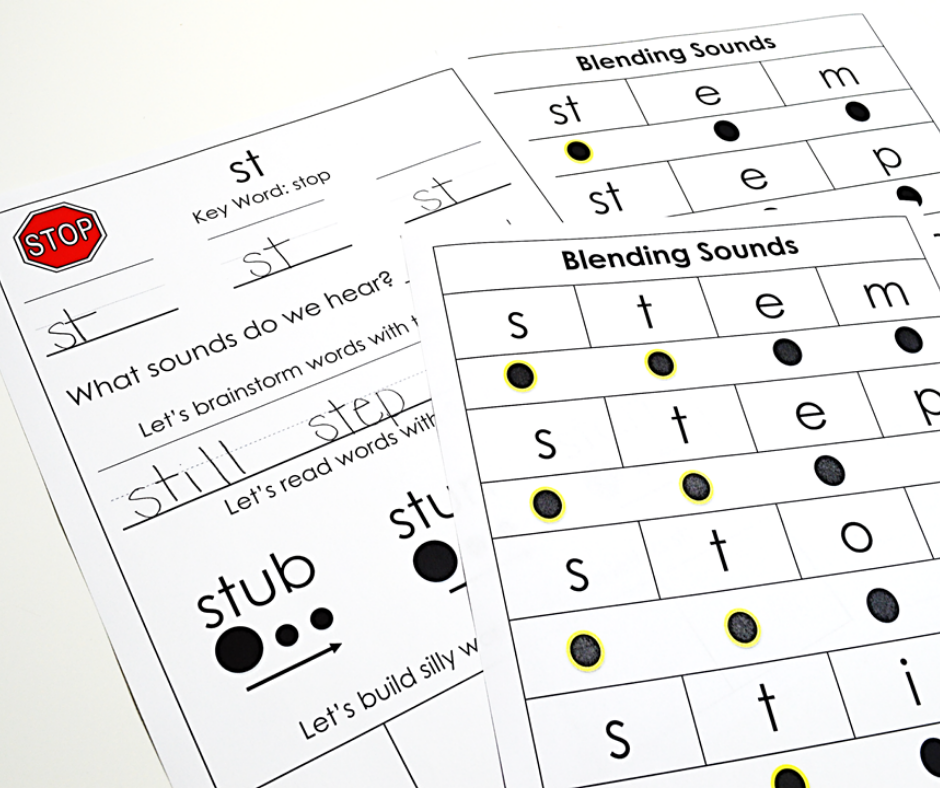Teaching Blends & Digraphs
The English language can be tricky, there is no doubt about that. With everything that goes into reading and spelling, it’s a wonder our brains can do it at all. I think often we take for granted just how complex the processes of reading and spelling truly are and we’re asking children to be able to accomplish this task at a really young age and often without strong explicit instruction.
Kindergarten teachers are often doing a phenomenal job setting the stage for reading and spelling by teaching the alphabet and the letter sounds. They’re often also doing a wonderful job teaching the sound structure of our language with Phonological Awareness activities.
This is a wonderful place to start with our students, but what we have to realize is that it doesn’t end there - we need to teach our students ALL the orthographic (visual letter patterns) of the English Language from ABCs to complex patterns such as TION.
We need to teach letter patterns in a building and systematic progression.
Once our students have mastered the alphabet and basic consonant and short vowel sounds, we need to move into blends and digraphs. There is a very important distinction between blends and digraphs.
Blends are two letters often found together where each maintains its own sound.
We can use Phonological Awareness activities (in this case blending) to teach our students how to combine two sounds. For example, /s/ + /t/ can slide into /ssssssssssst/ and eventually /st/. Blending two letters together is our very first example of teaching students to sound out words.
Digraphs are two letters that combine together to create a new sound.
We have to teach these patterns as an orthographic (visual) pattern that needs to be memorized. This is similar to learning the alphabet and recognizing that S says /s/, we must recognize TH as a unit that makes the sound /th/ like in “this”.
It’s critical that we’re teaching explicitly from the beginning.
It’s important to be explicit with students from the very beginning that our language is built off a triangle. The triangle is how our brain processes information. If we can help them understand that we use our eyes to see letter patterns (we don’t need to use fancy terms like orthographic processing obviously) and we use our ears to hear sounds (again we don’t need to tell them this is phonological awareness unless they’re older and learning this for the first time), and we use our experiences and knowledge of words to make meaning from those sounds we hear and letter pictures we see.
We show even our youngest students this triangle to help them understand how all the different activities we’re doing are building up their skills in each of these areas. It’s important to recognize that teaching blends and digraphs requires a connection of the bottom two processors on the triangle. If you have students who are struggling with blends or digraphs we can work to support them by identifying whether it’s an orthographic (visual letter) breakdown or a phonology (sound pattern) breakdown.
How We Teach Blends & Digraphs
We like to make sure we are teaching these patterns with fun and engaging activities. We start by having our students:
1 - Write the letters while saying the letter names…
…and then providing the sound those letters make.
This is the beginning connection of the bottom of the triangle. Then we complete a phonological awareness task having students:
2 - Practice blending the sounds together that are provided orally.
This is building the phonology base of the triangle. Then we have students work to:
3 - Build familiar words with those letter patterns.
This is building the left-hand side of the triangle. Next, we have our students:
4 - Start to decode words by tapping out or pointing to each individual sound in the words and then blending those sounds together to create words.
This is the next step in connecting the bottom of the triangle. You can expand this by asking students what these words mean which would connect the entire triangle together.
5 - Then, we focus on applying those beginning decoding skills.
It can be tempting to just jump straight to this step because this is where we begin to see all the work coming together in “real reading” and by that we mean generalization to reading short books and phrases. But it’s critical not to jump ahead or your students won’t have a solid foundation to build upon.
6 - Work through identifying the target sounds…
…using Phonological Awareness Tasks and completing an Auditory Drill
After decoding, it is important to work on encoding with these patterns as well. Work with students on recognizing the sounds to help prep them for spelling (i.e. what sounds do you hear in “stop” and what letters say /ch/). If you are working with students virtually - we HIGHLY recommend using an interactive activity for this so that they can move pieces around on the screen.
7 - Practice spelling with blends and digraphs
When working through spelling, we are sure to explicitly show students how the phonological awareness activities and auditory drill apply to spelling. For instance, if they are spelling the word “chat” we will ask them to break it down into sounds (they should respond /ch/, /a/, /t/) and then ask them to identify what makes those sounds.
8 - Applying words with blends and digraphs in sentences
Just like we applied these words when reading to higher-level tasks, we want to practice applying the written words to higher-level tasks as well.
For students who need extra support here, this may look like giving them cards with subject, predicate, and adverbial phrases on them (that include the target blend/digraph) and having them build a sentence before then copying it down.
If you are looking for activities to support in-person AND virtual instruction of blends & digraphs and other core components of literacy, then check out the 5CCL Activity Library. This library provides access to hundreds of SOR-aligned resources that help to target specific skills for students across grade levels.






